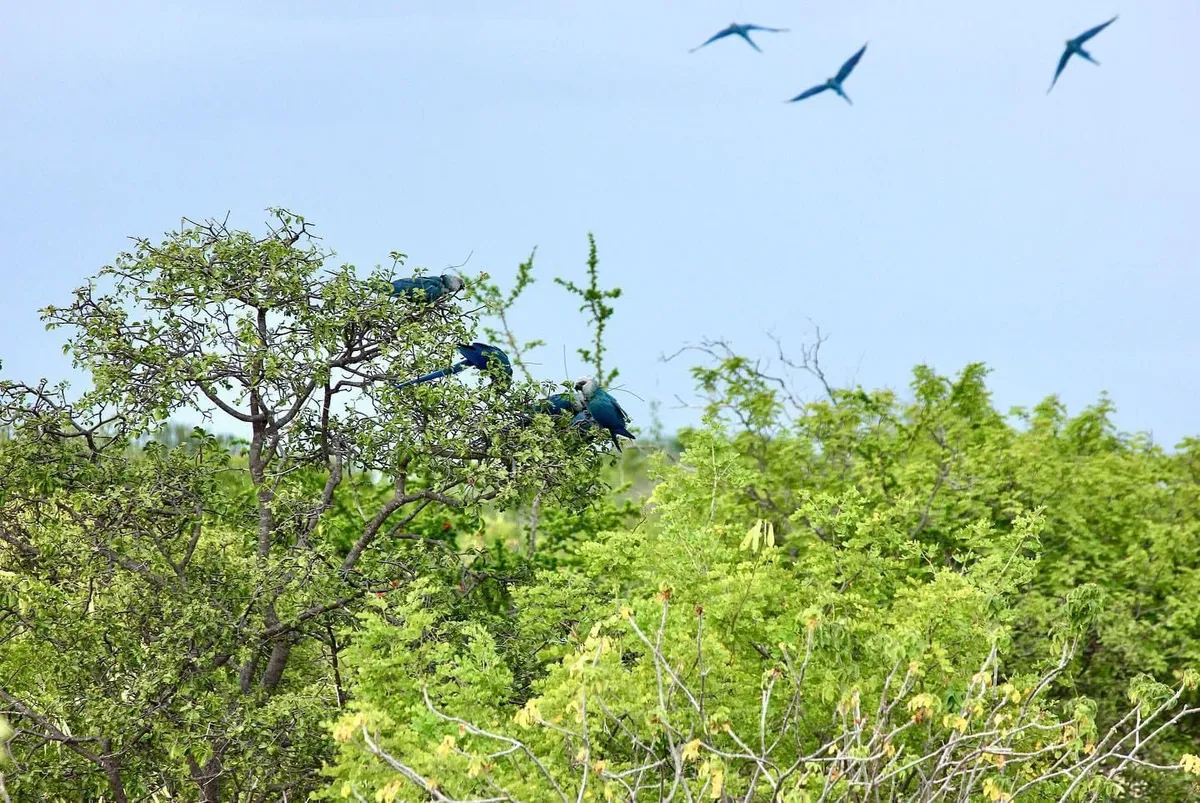Spix's macaw has been returned to live freely in its native Brazil having been extinct in the wild thanks to a remarkable and pioneering international conservation effort.
The parrot's predicament was highlighted in the 2011 animated film Rio, which told the story of a caged Spix's macaw named Blue. The film was not only a box-office hit but also provided the impetus to bring the parrot back to the wild.
Please note external videos may contain ads.
Named after the German naturalist Johann Baptist Ritter von Spix who first collected a specimen in 1819, the South American parrot's plight began when its homeland in north-east Brazil was destroyed by overgrazing and clearing.
Its fate was then sealed by the unfortunate fact that its distinctive blue plumage proved to be irresistible to global bird collectors with the result that by the turn of the millennium, Spix's macaw was declared extinct in the wild.
Around two dozen Spix's macaws were being held in private collections around the world and these caged birds enabled an ambitious captive-breeding programme to be initiated.
Now eight Spix's macaws have finally been successfully released back into the wild in Brazil.
This is the latest example of a species that has come back from extinction, with populations of blue iguanas, red kites and American bison all previously having bounced back in a similar way, thanks to the hard work of conservationists.
While these species have been aided by wildlife experts and charities, other species are believed to have returned from extinction without external support. Earlier this year, there were sightings of supposedly extinct species such as the thylacine and the ivory-billed woodpecker.
“Thus far, all of the released birds are alive, staying together as a flock, and flying and foraging in the release area,” says Tom White from the US Fish and Wildlife Service who is a technical adviser to the project. “The programme is going as well as it possibly could at this point.”
One of the most challenging aspects of the project was that captive-breeding had reduced the birds' instinctive survival skills.

To remedy this, the programme used a pioneering approach by releasing eight wild Illiger's macaws along with the Spix's macaws to act as trainers.
“This provided the environmentally naïve Spix's macaws with well-adapted ‘mentors’ who could show them where to find native food and alert them to potential predators,” explains White.
This is one of the first times that a ‘mixed species flock’ strategy has been used and its success means that it could be applied to other reintroductions facing similar challenges.
All the released birds are of reproductive age and it's hoped that they will start breeding next year.
Main image: Spix's macaw (Cyanopsitta spixii) is a species of parrot that has been extinct in the wild for over 20 years. © Association for the Conservation of Threatened Parrots (ACTP)
